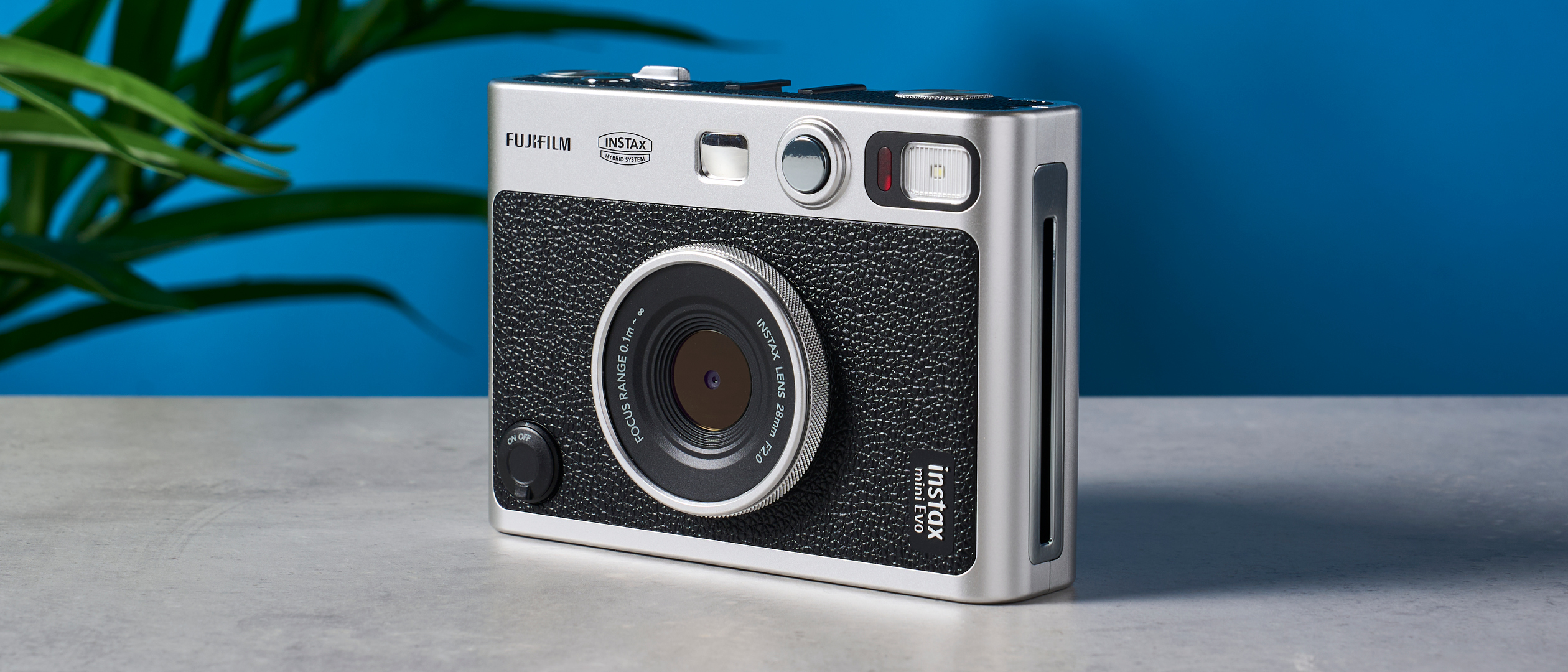Tom's Guide Verdict
The Fujifilm Instax mini Evo allows you to get truly creative with 100 different effect combinations, and the images it produces are gorgeous. The camera performs fantastically in low-light conditions too, and it’s compact and portable, making it ideal for travel. But not all photos can be transferred to your smartphone, and internal memory is limited.
Pros
- +
Premium, retro-looking body
- +
Compact and portable
- +
100 different effect combinations
- +
Excellent image quality
- +
Great low-light performance
Cons
- -
Limited photo transfer capabilities
- -
Limited internal memory
Why you can trust Tom's Guide
I’m an instant photography enthusiast and at Tom’s Guide, I’ve tested some of the best instant cameras around. There are lots of things I consider when reviewing one: the ease of use, build quality, image and print quality, and lots more. And I think I’ve just found my favorite instant camera: the Fujifilm Instax mini Evo.
The Instax mini Evo is a hybrid digital and instant camera that lets you view photos before you print them — no need to worry about running out of film when you’re out and about as you only print what you want to. The images this camera takes are gorgeous, regardless of the weather and time of day. I’ve loved traveling with the Instax mini Evo as it’s the perfect travel buddy and it looks retro and stylish. Creative possibilities are limitless with this camera as you get 100 different effect combinations, so there’s something for everyone. There really isn’t much wrong with the Evo at all, as you’ll soon see.
For the complete breakdown, read my full Fujifilm Instax mini Evo review.
Fujifilm Instax mini Evo review: Specs
| Specs | Fujifilm Instax mini Evo |
|---|---|
| Price | $199 / £174 |
| Lens | Fixed-focus lens |
| Viewfinder | No |
| Exposure control | -2.0 EV to +2.0 EV, ISO 100-1600 |
| Shutter | 1/4 to 1/8000 seconds |
| Aperture | 28mm f/2 |
| Image sensor | 1/5-inch CMOS |
| Shooting range | 10cm-∞ |
| Flash | Automatic |
| Flash refresh time | Not specified |
| Flash range | 50cm-1.5m |
| Self-timer | 2-10 seconds |
| Internal storage | 45 photos |
| microSD slot | Yes |
| Power | Rechargeable Lithium-ion battery |
| Dimensions | 4.83 x 3.42 x 1.41 inches |
| Weight | 10.05 ounces |
| Film used | Instax mini film |
| Film development time | Up to 90 seconds |
| Cost per print | 75¢ |
Fujifilm Instax mini Evo review: Cheat sheet
- What is it? A highly portable hybrid digital and instant film camera
- Who is it for? For travelers and instant photography enthusiasts who want lots of creative control
- How much does it cost? The Fujifilm Instax mini Evo is available for $199 / £174
- What do we like? The camera looks very retro, is easy to use, performs superbly in bright and low-light conditions, offers 100 different effect combinations, and is very portable
- What don’t we like? Internal memory is limited to 45 photos, and not all photos can be transferred to your phone
Fujifilm Instax mini Evo review: Price & availability
The Fujifilm Instax mini Evo is available for $199 at Amazon U.S. / £174 at Amazon U.K. and you can get it in one of two colorways: black and gray or brown and gray. Given its design and price point, the Instax mini Evo finds itself competing against the likes of the Kodak Mini Shot 2 Retro ($159) and the Instax mini 99 ($199).
Fujifilm Instax mini Evo review: Design & build quality
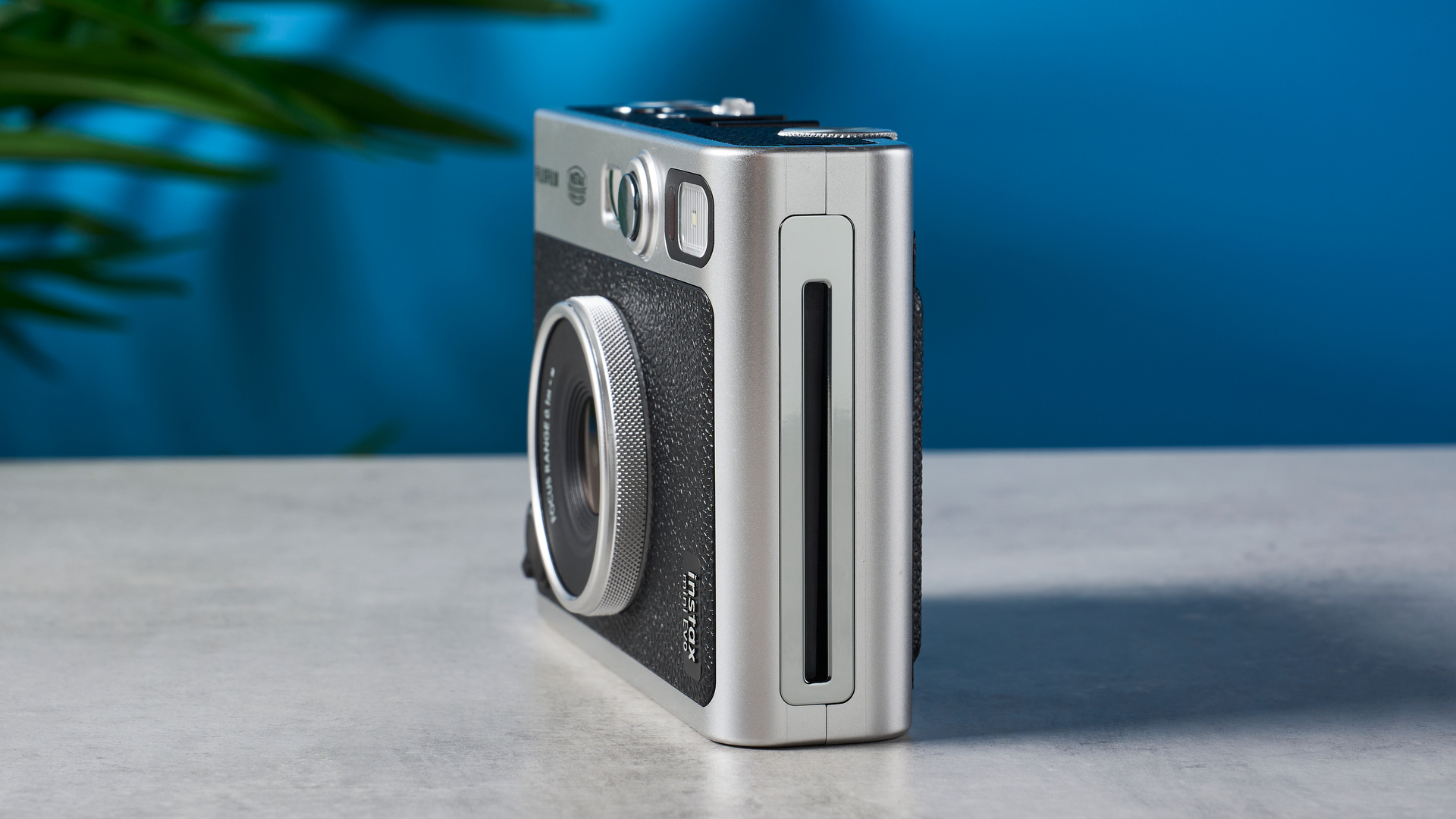
If you’re looking for a retro-looking camera, the Fujifilm Instax mini Evo is it. It borrows styling cues from old film cameras and looks lovely, especially in the black and gray colorway I tested. It also looks slightly similar to the Kodak Mini Shot 2 Retro, but the overall construction feels better and more premium.

The Instax mini Evo sports a premium-looking compact design and is easy to hold in one hand as it measures just 4.83 x 3.42 x 1.41 inches. Despite a similarly premium construction, the instant camera is lightweight too, weighing 10.05 ounces. It’s lighter than the similarly priced Instax mini 99, which weighs approximately 14 ounces. Given its small form factor, the Instax mini Evo is comfortable to carry around your neck or slide into a small bag. I went traveling with it and I’d highly recommend you do the same — it’s the most fun I’ve had documenting a holiday.
Fujifilm Instax mini Evo review: Lens & viewfinder

The Fujifilm Instax mini Evo has a relatively wide-angle 28mm fixed-focus lens, which is well-suited for group portraits, selfies and landscapes. The focal length can’t be adjusted so all you need to do is point and shoot. Since the camera is fitted with a 3-inch TFT color LCD screen, there’s no viewfinder to look through. I didn’t miss having a viewfinder as the screen is big enough to frame your shots — much bigger and brighter than the Kodak Mini Shot 4 Era’s ($229). Instant cameras rarely come with both a viewfinder and an LCD screen, so the kind of camera you want will be down to individual preferences.
The Instax mini Evo has an f/2 aperture which performs well in low-light conditions, which I’ll discuss soon. With a maximum shutter speed of 1/8000 seconds, you’ll be able to capture sharp photos of moving subjects too.
Fujifilm Instax mini Evo review: Controls
While the Fujifilm Instax mini Evo's layout appears muddled at first glance, it actually proves to be intuitive and you get used to it quickly. Right above the lens, you have the shutter button which is easy and gives nice tactile feedback when pressed.
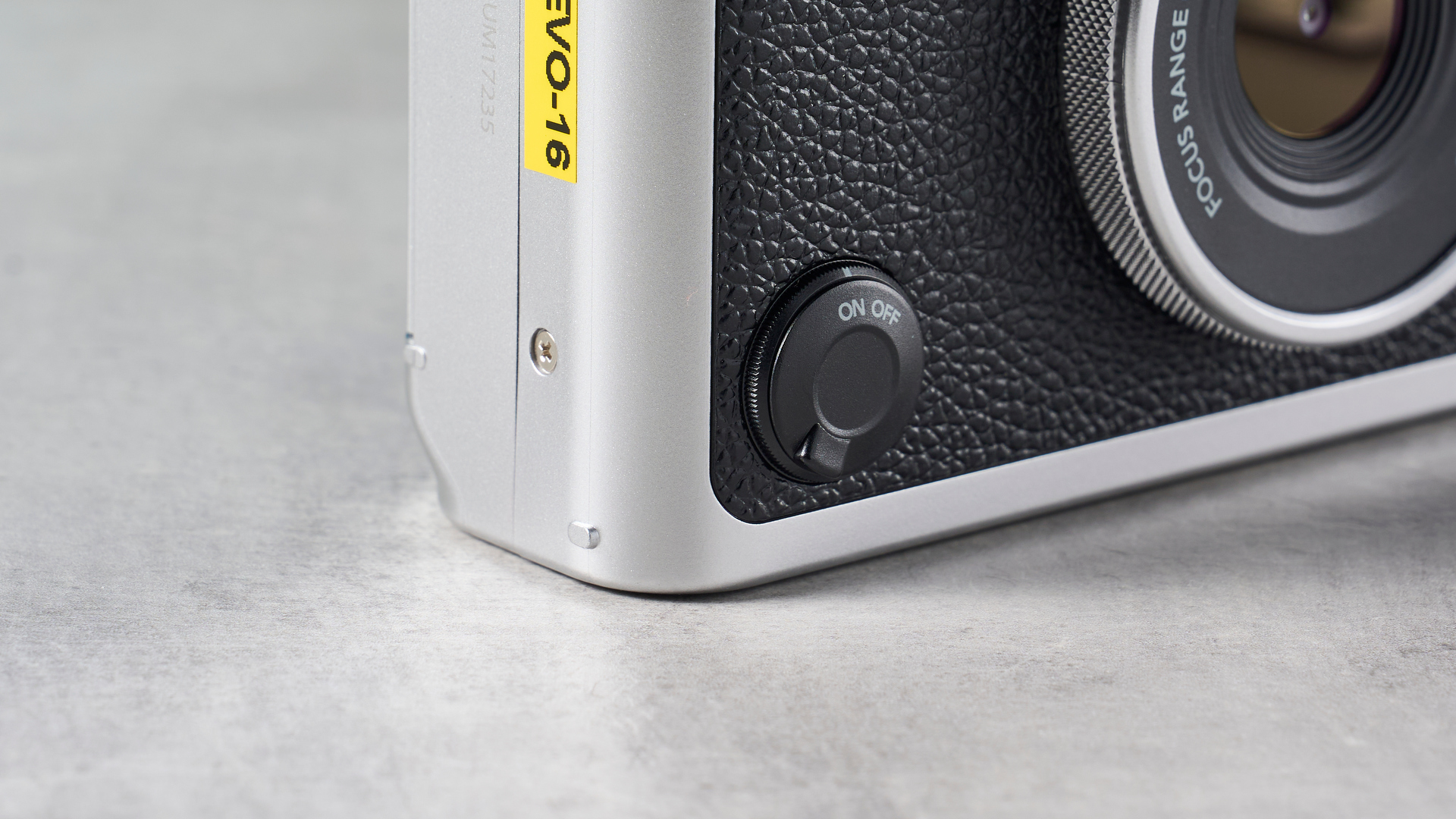
You’ll also find the power button next to the lens which, unlike the more modern “hold to turn on” buttons you find on most instant cameras, resembles the Fujifilm X-T50’s power switch instead. There’s also a dial around the lens which lets you choose from 10 different effects, such as fisheye, color shift, double exposure, and more.

On the Instax mini Evo’s top plate, there’s an Effect Reset button, another shutter button, and the film dial which lets you choose from 10 different filters. Combine that with the 10 lens effects and you get 100 creative combinations.

The top plate also houses the print lever which resembles the winding lever on old film cameras. I won’t lie, using the lever to print a photo is so much more satisfying than pressing a button.
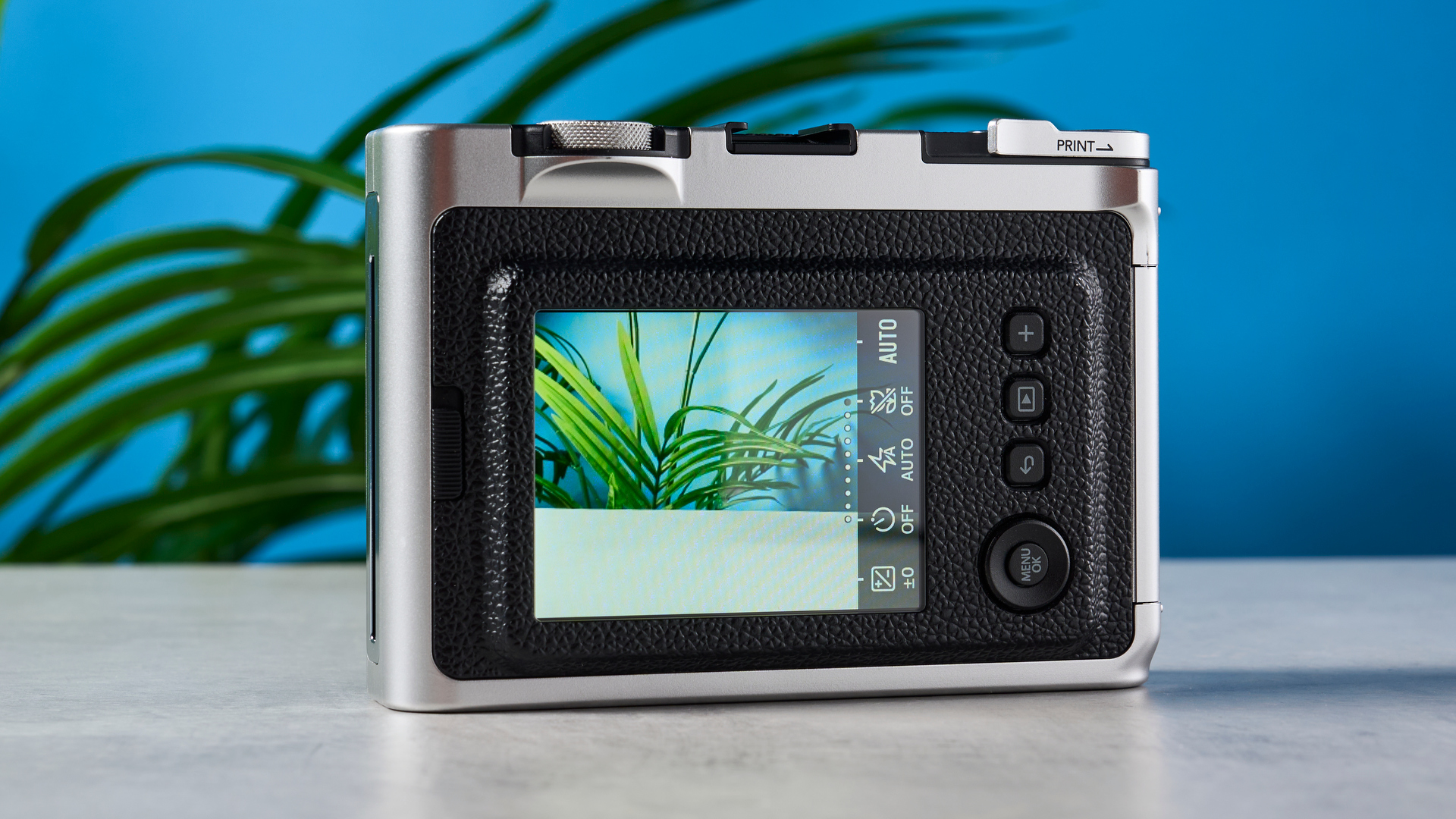
Now to the back of the camera which, of course, is mostly taken up by the LCD screen. Here, you’ll find the film door and lock, navigation, menu/OK, function and playback buttons.
Fujifilm Instax mini Evo review: Image & print quality

Don’t worry if a photo doesn’t turn out the way you envisioned; the Fujifilm Instax mini Evo lets you view an image before you print it. The camera also comes with internal storage which stores 45 images. If this sounds limiting — which I found it to be — there’s a slot for a microSD/microSDHC memory card too.
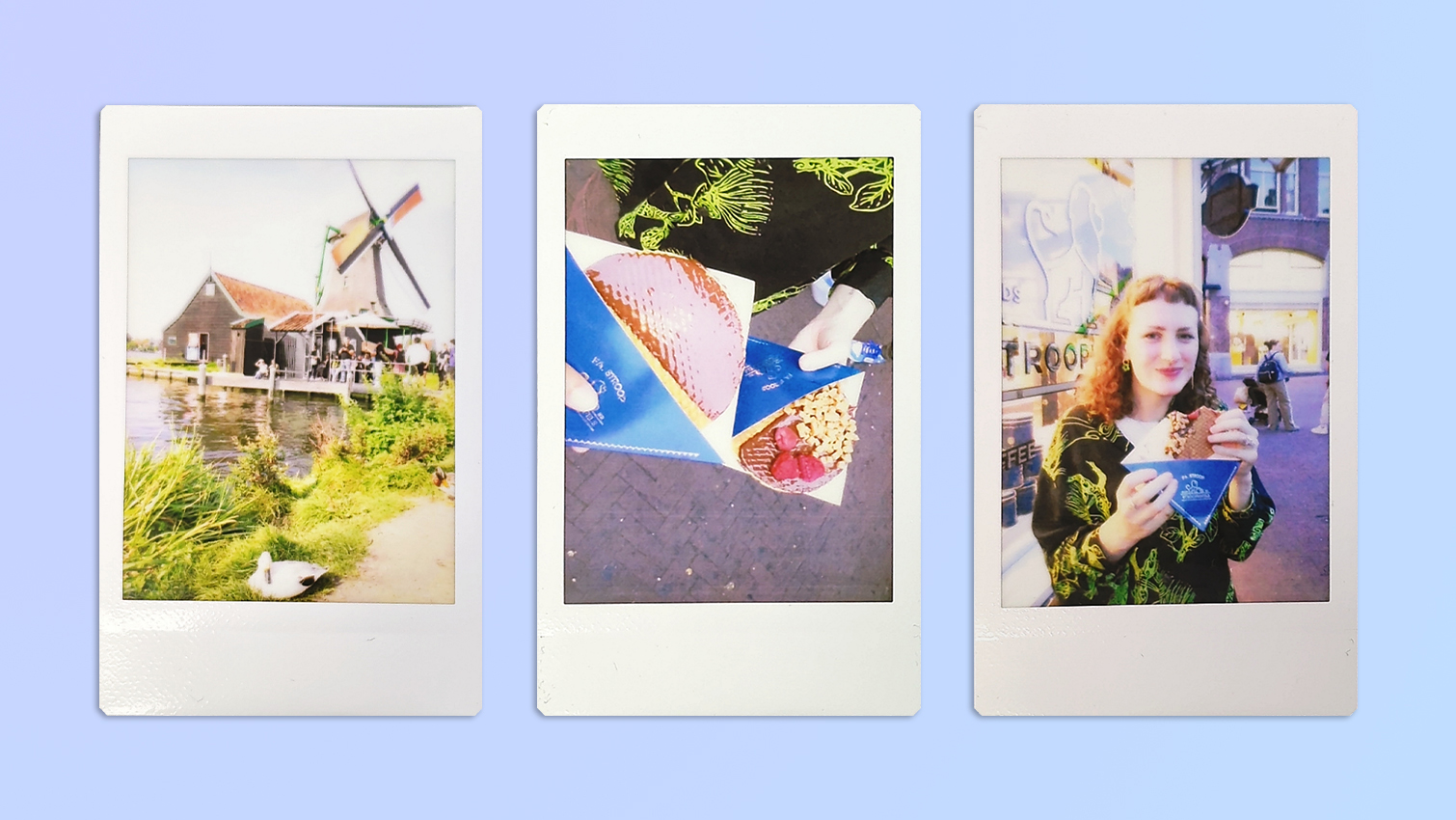
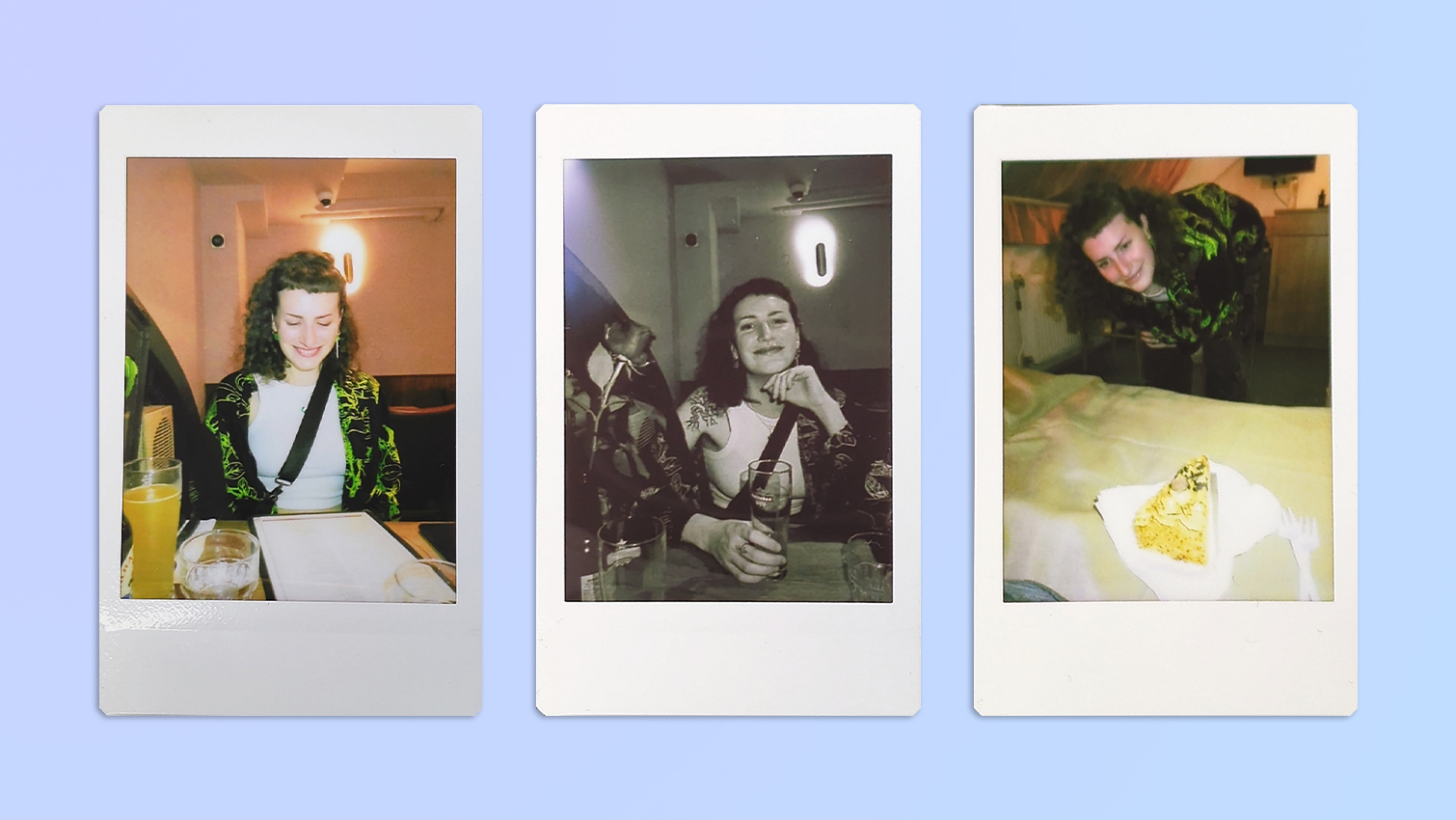
The Instax mini Evo’s print quality is fantastic. Rain or shine, this camera performs incredibly. All the photos in the first slide in the gallery above were shot outdoors during the day, while the photos in the second slide were shot indoors.

As I mentioned earlier, the Instax mini Evo allows you to choose from 100 different effect combinations, so you can get really creative. I love how the double exposure of the windmill above came out. The LCD screen is very helpful as, after you’ve taken the first exposure, it shows you how the second will line up. Similarly, I enjoyed using the color shift lens effect too, as can be seen in the second photo above. It’s great to see that the camera has kept my partner in focus too.
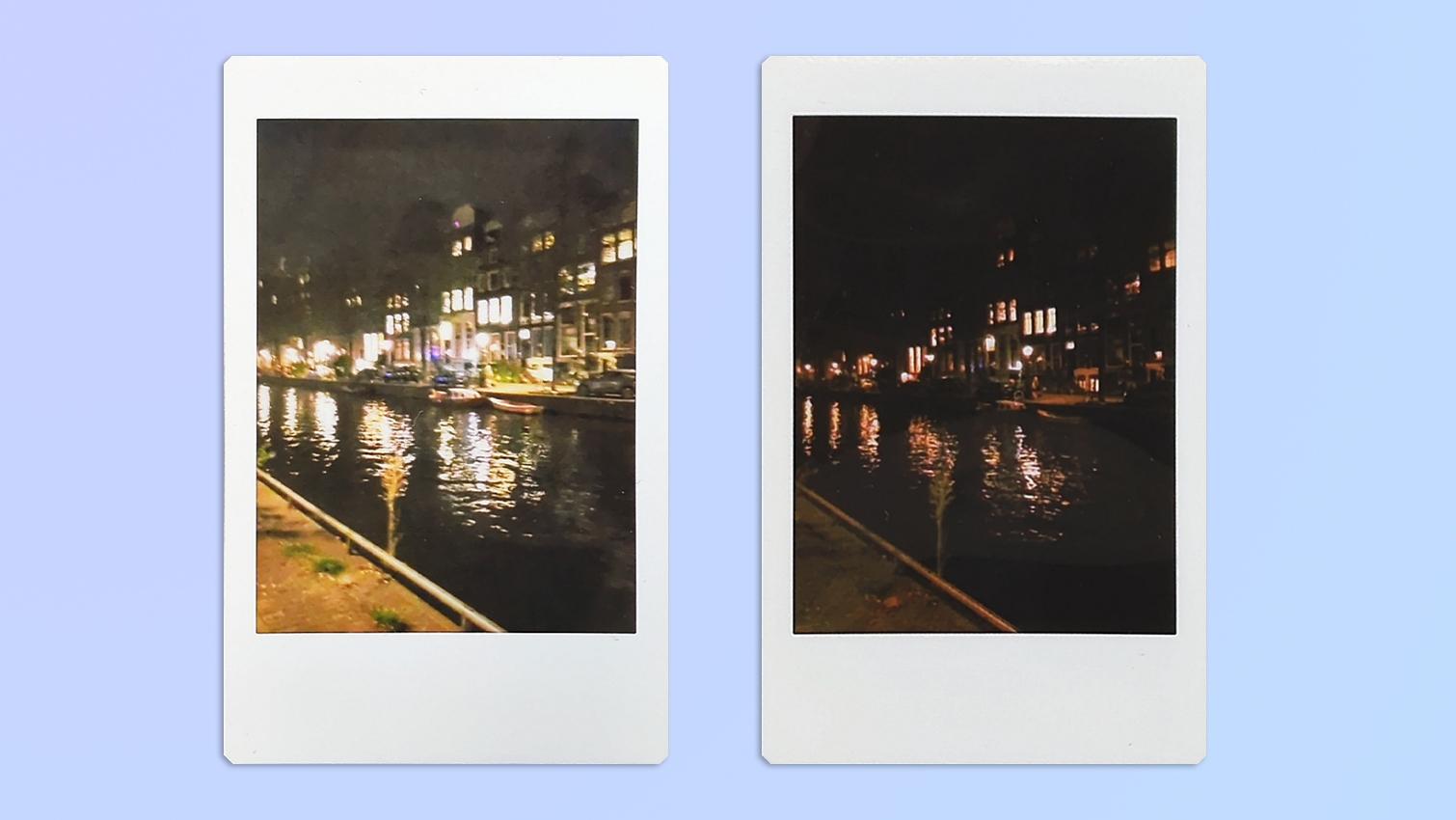
As for low-light performance, it’s the best I’ve seen from an instant camera. I would recommend keeping the flash on when you’re shooting at night though. The first photo above was shot with the flash on and the second was shot with the flash off. The second photo appears sharper as you can see the ripples in the water more clearly. But the first photo is much brighter and reveals more details. For example, you can see the boats moored in the distance.
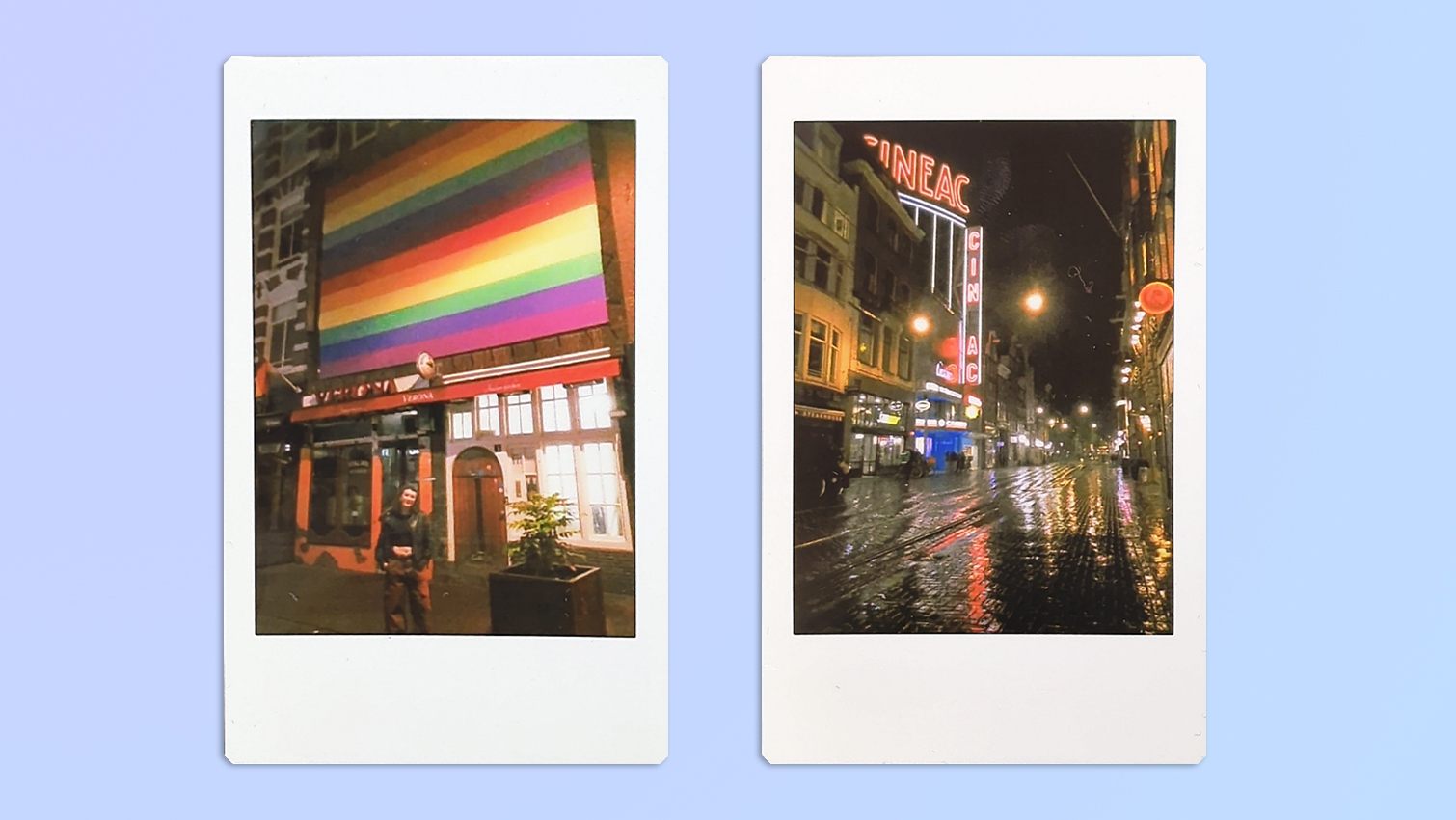
I also love how the two photos above have turned out. The first was taken on a dimly lit street, illuminated by the light coming from the windows behind my partner and a single lamp post at quite a distance away from us. The details in the shot are superb, and the camera has reproduced the many colors faithfully. The second shot is my favorite low-light photo as the rainy street looks lovely with the neon lights reflecting on it.

The Instax mini Evo is really fun to use for selfies thanks to the selfie mirror next to the lens. Both the selfies I took look great, as can be seen above.
Fujifilm Instax mini Evo review: App
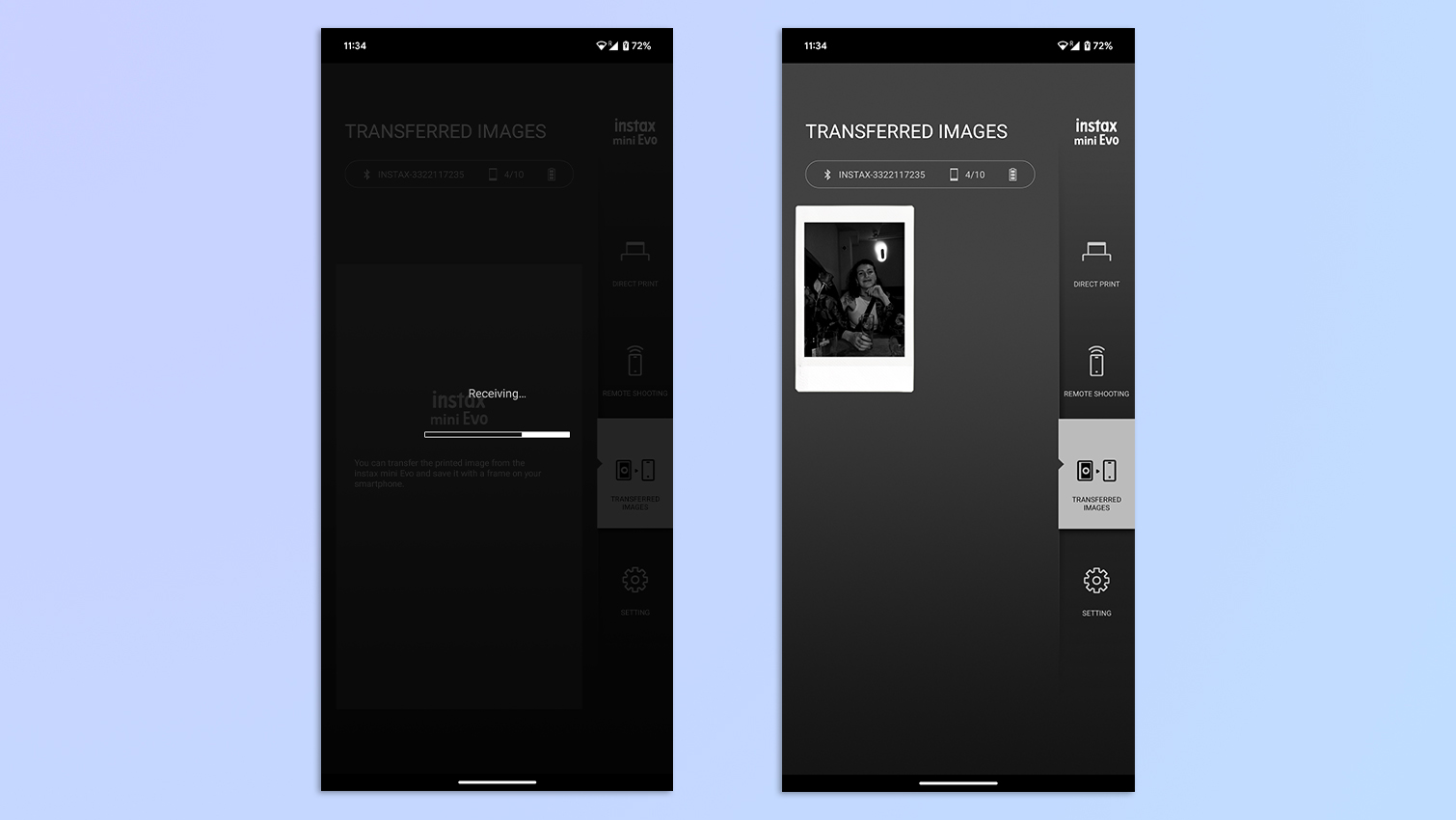
Unlike other Fujifilm Instax cameras which use the Instax UP! app, the Instax mini Evo has its own dedicated app, available to download on either iOS or Android.
You can use the app to print photos from your smartphone, remotely trigger the shutter, and transfer printed images to your phone. All of these functions are very easy to use. My only gripe is that you can only transfer digital copies of printed images to your smartphone, which is extremely annoying. The Instax mini LiPlay ($149), on the other hand, uses the Instax UP! app and allows you to transfer all photos to your phone.
Fujifilm Instax mini Evo review: Film cost & yield

Just like Fujifilm’s Instax mini LiPlay and the Instax mini 12 ($79), the mini Evo uses Instax mini film — either black and white or color. You’ll pay $14 / £14 per double film pack (20 pieces of film). Each print costs 75¢.
For context, Polaroid Go film used by the Go Gen 2 ($79) costs $19 / £18 for 16 pieces of film, so is noticeably pricier. On the other hand, 30 sheets of 2.1 x 3.4-inch paper used by the Kodak Mini Shot 2 Retro cost $22 / £18 — nearly as much as Instax mini film, but slightly better value if film costs are a concern.
Fujifilm Instax mini Evo review: Battery life
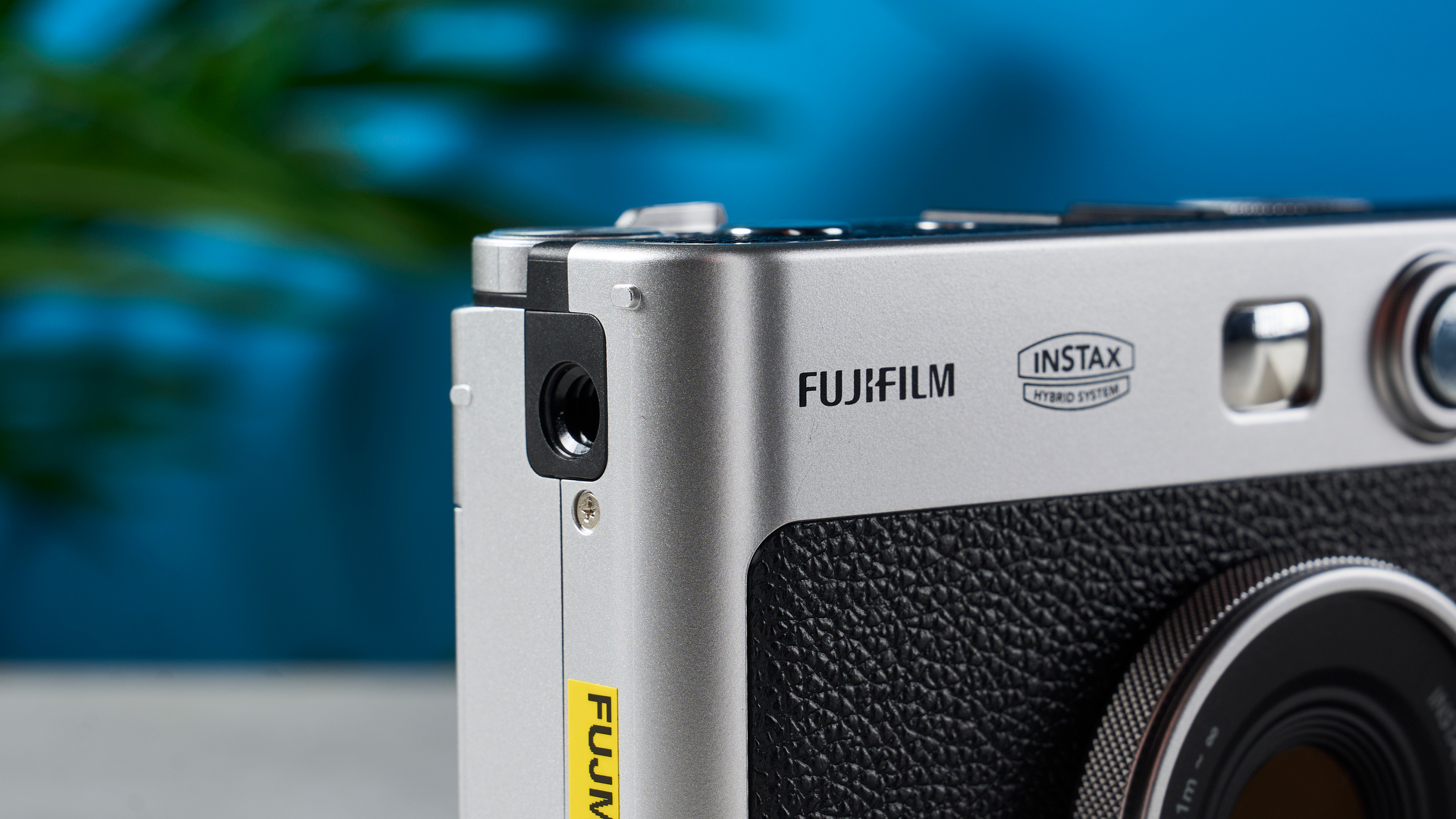
The Fujifilm Instax mini Evo is equipped with a rechargeable Lithium-ion battery and has a USB-C port for charging. This camera has excellent battery life. In my testing, it took just over two hours to go from zero to 100%. Our review unit came with 20 films, so I couldn’t drain the battery completely, but Fujifilm claims the camera will last for 100 shots depending on usage conditions. There’s no battery percentage indicator as you only get bars. After printing 20 photos, I still had three bars left.
Out of all the instant cameras I’ve tested (so far), the Instax mini Evo has the (joint) best rechargeable battery life. The Polaroid Go Gen 2 lasts for 18 shots, the Kodak Mini Shot 2 Retro lasts for 20, the Kodak Mini Shot 4 Era lasts for 25, and the Instax mini 99 also lasts for 100 shots.
Fujifilm Instax mini Evo review: Verdict

Looking for a hybrid instant camera that looks and feels retro, is ideal for travel, and prints awesome photos? Then the Fujifilm Instax mini Evo is for you. I’ve personally loved traveling with this camera, and taking portraits, selfies and landscape shots regardless of the lighting conditions. With 10 different lens effects and 10 filters, you can combine them in any way you like and choose from 100 effects for maximum creativity.
However, while you can transfer images from the camera to your smartphone, this doesn’t apply to images you haven’t printed. Also, internal memory is limited to 45 shots so consider getting a microSD card.
Out of all the instant cameras I’ve tried and tested so far, the Instax mini Evo is my favorite and it might be a while until it’s dethroned.
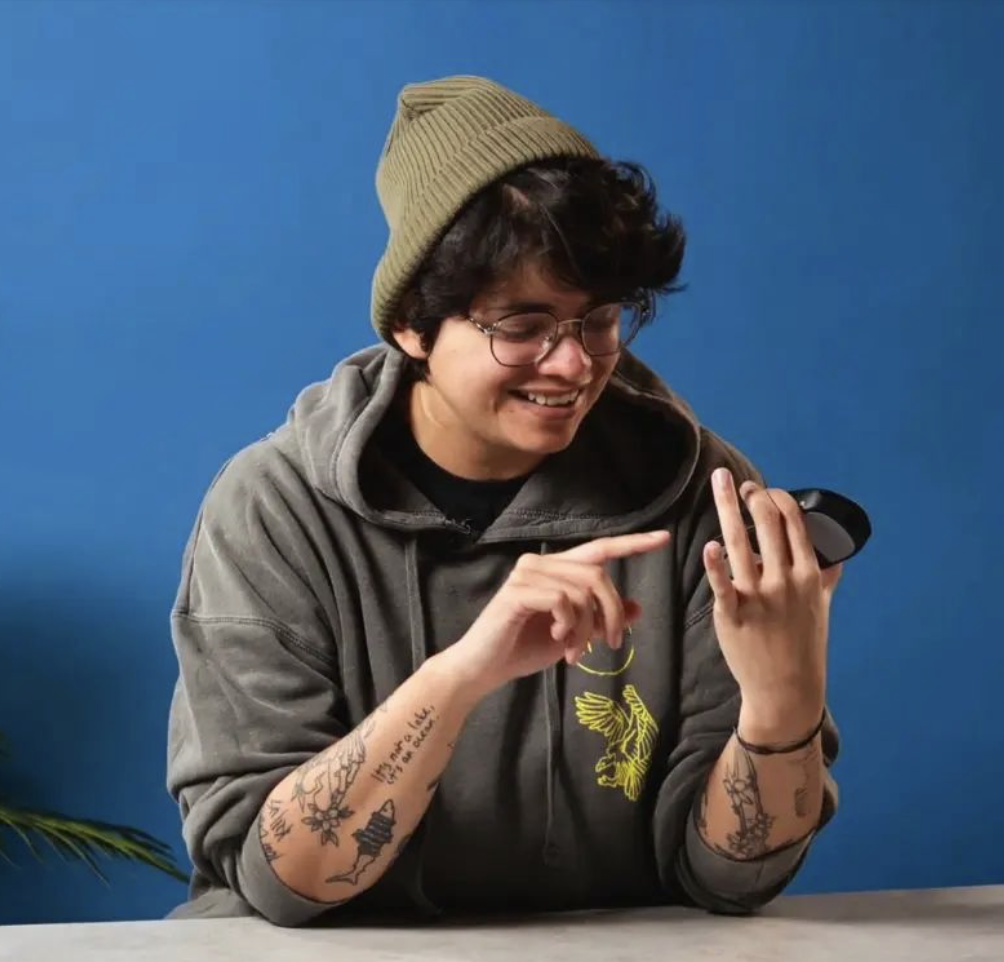
Nikita is a Staff Writer on the Reviews team at Tom's Guide. She's a lifelong gaming and photography enthusiast, always on the lookout for the latest tech. Having worked as a Sub Editor and Writer for Canon EMEA, she has interviewed photographers from all over the world and working in different genres. When she’s not working, Nikita can usually be found sinking hours into RPGs on her PS5, flying a drone (she's a licensed drone pilot), at a concert, or watching F1. Her work has appeared in several publications including Motor Sport Magazine, NME, Marriott Bonvoy, The Independent, and Metro.
